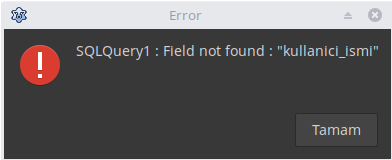The BOOLEAN can be abbreviated as BOOL. PostgreSQL uses one byte for storing a boolean value in the database. In standard SQL, a Boolean value can be TRUE, FALSE, or NULL. Leading or trailing whitespace is ignore and case does not matter.

The key words TRUE and FALSE are the preferred (SQL-compliant) usage. Example 8-shows that boolean values are output using the letters t and f. Someway to do `where booleanvalue=false` on both. A third state, unknown, is represented by the SQL null value.
Valid literal values for the true state are. To retrieve data from a table, the table is queried. An SQL SELECT statement is used to do this. The statement is divided into a select list (the part that lists the columns to be returned), a table list (the part that lists the tables from which to retrieve the data), and an optional qualification (the part that specifies any restrictions).
Stack Exchange network consists of 1QA communities including Stack Overflow, the largest, most trusted online community for developers to learn, share their knowledge, and build their careers. How to Query a JSON Column in PostgreSQL. One of PostgreSQL’s benefits is that it’s a relational database, but you can also get the advantages of unstructured data by storing things in a JSON column.
If the given condition is satisfie only then it returns specific value from the table. Alternatively, because MySQL maps the BOOLEAN data type to the TINYINT data type, using either BOOLEAN or TINYINT(1) can get the same result. There are a few other methods for storing booleans, which I’ve highlighted at the end of the post, including the reasons I don’t recommend them. A Boolean value is a simple data structure which can only represent values of true or false. Like all other data types, Boolean values can also be set to NULL.
Checking Boolean values: yes: 4. Compare the value of a boolean field against any of the values: 7. There are many types of indexes in Postgres , as well as different ways to use them. In this article we give an overview of the types of indexes available, and explain different ways of using and maintaining the most common index type: B-Trees. An index is a way to efficiently retrieve a relatively small number of rows from a table. Users can add new types with the help of CREATE TYPE command. You use a bool or boolean keyword to declare a column with the Boolean data type.
Insert is slow but select (data retrieval is fast) Saves inputted data exactly the way it is including whitespace. Updating pg_cast helps, however sometimes ! This table has a boolean datatype column. As my colleague Will Leinweber said recently in his talk Constraints: a Developer’s Secret Weapon that he gave at pgDay Paris: database constraints in Postgres are the last line of defense.
The most important of those constraints is the data type, or the attribute domain in normalization slang. Support for the selectivity of a WHERE condition. As we saw before, a function that returns a boolean can appear at the top level of a WHERE condition. In PostgreSQL, a literal is the same as a constant. GitHub is home to over million developers working together to host and review code, manage projects, and build software together.
These keywords are mostly used to join or invert conditions in a SQL statement, specifically in the WHERE clause and the HAVING clause. SQL WHERE clauses: Avoid CASE, use Boolean logic. As some of you may know, I recommend to avoid using CASE expressions in the WHERE clause of a query to express conditional logic. Then we will move to the more advanced topics such as how to create tables and users. Может какая системная переменная есть, только не в конфиге.
PostgreSQL, unlike SQL Server, can use an Anti Join method to process a query that combines LEFT JOIN with IS NULL predicate on the join field from the right table. SQL is a language where one task can be solved multiple ways with different efficiency. This page aims at discussing possible variable designs within PosgreSQL.
Brak komentarzy:
Prześlij komentarz
Uwaga: tylko uczestnik tego bloga może przesyłać komentarze.